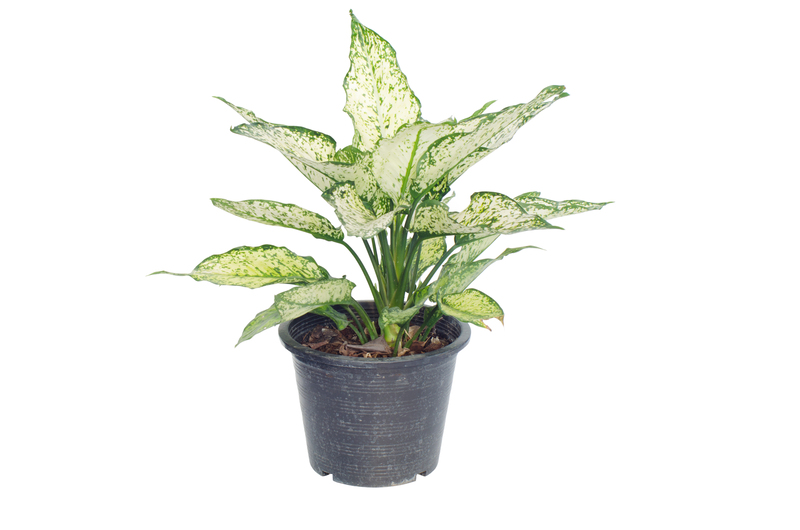Expert Advice on Safeguarding Your Lawn Against Summer Drought Stress
When summer arrives, increased temperatures bring the risk of drought, threatening the lush green lawns that homeowners work hard to maintain. Protecting your lawn against summer drought stress is crucial for its survival, health, and year-round beauty. Through prevention, proper care, and timely intervention, you can ensure your turf thrives even during the hottest and driest months.
Understanding Drought Stress in Lawns
Drought stress occurs when lawns do not receive enough moisture to fulfill their needs. This water deficiency causes grass blades to wilt, discolor, and eventually die if not promptly addressed. Understanding the signs and science behind summer drought stress allows you to respond proactively rather than reactively.
- Browning and Wilting: The grass loses its vibrant green color and may turn brown or straw-like.
- Footprint Evidence: When drought-stressed, grass blades take longer to return to their upright position after being stepped on.
- Soil Crusting and Compaction: Parched soil hardens, which makes it more difficult for water to penetrate deeply.

The Science Behind Lawn Drought Tolerance
Lawn grass types have varying levels of drought resistance. Cool-season grasses such as Kentucky bluegrass or tall fescue are more vulnerable to drought stress, while warm-season grasses (like Bermuda grass, zoysia, and buffalo grass) have evolved to survive hotter, drier climates.
However, regardless of grass type, even the most resilient lawns can succumb to prolonged water shortages without intervention. Implementing best practices is critical for safeguarding your lawn against summer heat and drought.
How to Protect Your Lawn from Summer Drought
1. Choose the Right Lawn Grass
Not all grass varieties are created equal when it comes to drought-resistance. If you're planning a new lawn or overseeding, consider species that are known for their ability to withstand dry spells.
- Bermuda Grass: Requires less water and bounces back quickly after drought.
- Buffalo Grass: Adapted to arid conditions and requires infrequent mowing.
- Zoysia Grass: Deep roots and dense growth offer great drought tolerance.
- Tall Fescue: Among cool-season grasses, it has superior drought-resistant qualities.
*When making changes, consult with a local turf expert or county extension office to select the most appropriate species for your region.*
2. Watering Wisely: Smart Irrigation Tips
Effective watering is fundamental for preventing summer drought stress damage. It's not about watering more, but about watering smartly.
- Deep, Infrequent Watering: Water deeply but less often to promote deep root growth. Aim for one inch of water per week, including rainfall.
- Early Morning Watering: Water between 5 and 9 a.m. This prevents evaporation loss and minimizes fungus risk.
- Avoid Evening Watering: Water left on leaves overnight encourages disease.
- Use Mulch or Lawn Dressings: Organic materials retain soil moisture and insulate roots.
3. Mowing Techniques for Drought Survival
Improper mowing is a common cause of lawn stress during droughts. Our experts recommend these drought-protective mowing strategies:
- Keep Grass Taller: Set your mower height to three inches or higher. Taller blades shade soil and reduce moisture loss.
- Sharpen Mower Blades: Dull blades tear grass, causing additional moisture loss and stress.
- Leave Clippings: Grasscycling returns nutrients and creates a protective, moisture-holding layer.
4. Soil Health and Aeration
Healthy soil is the foundation of a drought-tolerant lawn. Compacted soil inhibits roots from accessing water. Here's how to improve it:
- Aerate Annually: Aeration relieves compaction, improves percolation, and encourages deeper roots.
- Add Compost: Organic matter enhances water retention and soil fertility.
- Check Soil pH: Lawn grasses thrive at a pH of 6.0-7.0. Test and amend soils if necessary to optimize nutrient uptake.
5. Fertilizing for Drought Defense
Proper fertilization strengthens grass to endure stressful conditions. However, over-fertilizing can burn grass and worsen drought damage.
- Slow-Release Fertilizers: These provide a steady nutrient supply with less risk of burning.
- Time Applications Carefully: Avoid fertilizing during peak drought periods. Late spring or early autumn is ideal.
- Organic Options: Compost and bio-fertilizers nurture soil biology and water-holding capacity.
6. Weed Management
Weeds compete with your lawn for scarce water and nutrients. During drought, their damage is even more pronounced. Implement these strategies for a healthier, drought-resilient lawn:
- Pre-emergent Herbicides: Apply in spring to stop weed seeds before they start.
- Manual Removal: Pull weeds by hand or with tools to prevent root spread.
- Maintain Lawn Density: Thick, healthy turf resists weed invasion better than thin or patchy lawns.
Signs of Drought Stress & When to Intervene
Recognizing early warning signs is paramount. Some symptoms of grass drought stress include:
- Color Change: Lawn shifts from vibrant green to bluish-gray, then brown.
- Slowed Growth: Mowing frequency drops as grass grows slower or not at all.
- Footprinting: Lawns do not spring back after walking across them.
- Brittle Soil: Soil feels hard and dry to the touch, often pulling away from driveways or sidewalks.
If you spot these signs, act quickly:
- Give a Deep Watering: Soak the soil to reach root depth, but don't flood the area.
- Pause Fertilization and Heavy Use: Avoid stressing grass further until it begins to recover.
- Limit Foot Traffic: Walking on drought-stressed lawns causes damage and compaction.
Long-Term Strategies for Summer Drought-Proof Lawns
1. Improve Lawn Drainage & Topography
Correct uneven surfaces where water runs off quickly or pools. Gentle slopes let water soak in gradually, while low spots may require soil amendments or drains.
- Level with Topsoil: Raise low spots to match the surrounding area.
- Install French Drains: Redirect excess water and encourage uniform moisture.
2. Maintain a Consistent Watering Schedule
Avoid letting the soil dry out completely, then overwatering. Consistency helps grass survive and regrow during hot spells.
- Use Smart Controllers: Set irrigation to match current weather and soil conditions.
- Monitor Soil Moisture: Invest in a moisture meter for more precise readings.
3. Encourage Deep Root Growth
Deeper roots access cooler, moister soil layers, making your lawn more resilient to drought.
- Water Deeply, Not Lightly: See previous watering advice.
- Avoid Frequent, Shallow Watering: This encourages shallow rooting and increases drought susceptibility.
4. Mulching and Groundcovers
Not every area of your yard has to be turfgrass. Mulch beds and drought-tolerant groundcovers reduce overall water usage and maintain visual interest during hot, dry months.
- Organic Mulches: Bark, straw, or wood chips keep soil cool and moist.
- Drought-Tolerant Plants: Native wildflowers, sedums, and thyme need little irrigation and attract pollinators.
Expert Tips for Preventing Summer Lawn Drought Damage
1. Avoid Heavy Lawn Use During Drought
Limit traffic, play, and mowing when grass is struggling. Extra stress can slow recovery or cause bare patches that invite weeds.
2. Monitor Local Water Restrictions
Many communities issue watering bans or restrictions during drought. Obey local guidelines and look for rebates on efficient irrigation upgrades.
3. Invest in Smart Technology
Modern irrigation controllers, soil moisture sensors, and even Wi-Fi-connected weather stations help automate watering and reduce waste--particularly helpful in stretches of prolonged heat.
4. Prepare Your Lawn Before Summer Begins
Actions taken in spring lay the groundwork for drought-tolerant grass:
- Overseed Thin Areas: Thicker turf resists drought and weeds.
- Apply Pre-Emergent Herbicide: Stop weeds from robbing moisture from lawns.
- Deep Root Feeding: Root zone fertilization builds drought hardiness.

FAQ: Summer Drought Lawn Care
Q1: What is the best time of day to water my lawn during drought?
A: Early morning (before 9 a.m.) is best. This minimizes evaporation and allows grass to dry before nightfall, helping prevent fungal diseases.
Q2: Should I mow my lawn during a drought?
A: It's better to reduce mowing frequency and set your mower high (3+ inches). Mow only when necessary, and always with sharp blades to avoid tearing the grass.
Q3: Is it necessary to fertilize during hot, dry weather?
A: No; avoid fertilization when grass is stressed from heat and drought. Wait until rain returns and cooler temperatures prevail before resuming a feeding schedule.
Q4: How do I rejuvenate a drought-stressed lawn?
A: Practice deep watering, minimize traffic, and overseed in late summer or fall. Aerate compacted soil and avoid excessive fertilization or herbicides until recovery is noticeable.
Conclusion: Keeping Your Lawn Green During Summer Drought
Safeguarding your lawn against summer drought and heat stress is a matter of understanding, preparation, and care. By selecting the right grass types, adopting effective watering and mowing strategies, tending to your soil, and watching for the earliest warning signs, you can maintain a resilient and beautiful lawn throughout the harshest months.
Implementing these expert, science-backed tips not only saves your time, water, and money but also protects your investment for seasons to come. Treat your lawn as a living system, nurture its roots, and it will reward you with serenity, shade, and increased property value--even in the face of summer drought.
- Stay informed about local weather patterns and restrictions.
- Commit to regular lawn care, not just during drought but year-round.
- Invest in sustainable landscaping practices for lasting, drought-proof beauty.
With preparation, patience, and perseverance, you can ensure your lawn's health and vibrancy, rain or shine.